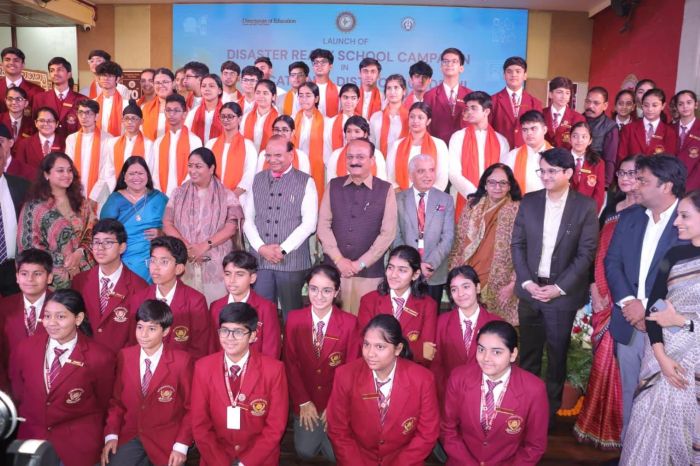
By Dr. Prashant Bhalla, President, Manav Rachna Educational Institutions (MREIs)
 With E-learning materials being used more widely now, their future looks promising. Not only can these be accessed from anywhere but are also available in various languages and if not, can readily be translated. Compared to printed content, which has greater manufacturing costs, digital content is easier to create and make available.
With E-learning materials being used more widely now, their future looks promising. Not only can these be accessed from anywhere but are also available in various languages and if not, can readily be translated. Compared to printed content, which has greater manufacturing costs, digital content is easier to create and make available.
The digitization that the EdTech Market has brought about has been made possible due to the emerging technologies and a well-laid digital infrastructure and its easy adoption by institutions. At the same time, the technologies that are currently leading the EdTech market have also emerged as a prime challenge for educators and institutions alike. EdTech is revolutionizing the education industry by addressing issues related to pedagogies and simplifying learning, especially during and after COVID. With the incorporation of hardware and software tools into traditional theory and practice, EdTech is clearly enhancing educational outcomes and classroom learning. The increased adoption of these tools by educational institutions is undoubtedly driving the growth of this segment.
So, what is next in the EdTech as education amalgamates with the Digital Age? Which EdTech trends should be taken into account as we are ready to enter 2023? How will it alter the landscape or evolve it?
Here is my take on the following 10 major technologies which will impact the education industry in the year 2023 and beyond:
Virtual Labs teaching Experiments: A virtual setting aimed at improving students’ laboratory abilities. In contrast to the limitations of brick-mortar labs, they let the learner conduct a variety of experiments anytime and anywhere.
Inspring Innovation and Engagement with Games: This has increasingly been used by educators to engage students in concepts they might otherwise not be as interested in. With the likes of Kahoot!, FunBrain, Race to Ratify, etc., students are gladly comprehending hitherto boring subjects.
Big Data- Automating Educational Aspects: This facilitates schools in gathering and analyzing student data to monitor their academic progress. It can be used to determine pupils’ interests as well. Big Data technologies assist teachers in giving feedback and guiding students in choosing a lucrative career path.
AI-based Tailor-made Courses: AI-powered education capacitates instructors, learners, and (if necessary) parents to interact on a single platform. Al can personalize education and offer individualized learning that allows students to investigate subjects that interest them by altering curricula at the whole-class or individual level.
Improved Engagement with Virtual Reality: VR, which provides a more immersive learning environment, and simulations that give pupils a chance to investigate a different reality from a distance, are two of the many fantastic pros of EdTech.
Interactive Learning with Extended Reality: For 2022, further innovation may improve interactive learning by using more advanced technologies like XR. This will support the development of virtual labs for science and technology students, offering more hands-on learning opportunities.
Conversational AI – Digital Help: Alexa, Cortana, and Siri have now become household names. Thanks to their amazing ability to interpret voiced commands and respond accordingly. Playing informative videos, powering devices on and off, turning the volume up and down, etc. are possible with only a short-spoken command now.
Immersive Experience with Apps: To our amazement, writing smartpens have the capacity to record audio and digitize notes with the help of co-writing apps that use predictive analytics and speech recognition. Another superpower of EdTech is its capacity to convert text to sound. Children who have trouble reading normal print can benefit from Text-To-Speech (TTS) software.
Empowering EdTech with Cloud: Trends imply that Cloud Computing will be a crucial tool for enabling EdTech in K–12 education, expanding it at a CAGR of 24.70% until 2030 (Verified Market Research, 2022).
Custom E-Learning Development: Web-based talking tools enable the realization of online classes to assist students with impairments in communicating with one another as well as the instructor. XB Chat, for example, works flawlessly with Chrome, Mozilla, and Safari browsers. Users can do video and audio calls and even create text chats.
In India itself, EdTech market has a huge share and studies anticipate that by 2025, the online education and lifetime learning market alone will be $5 billion here (Entrackr, 2022). Certainly, the future of EdTech is bright, but it will depend on the Education industry’s capacity to quickly adapt to the evolution and customize solutions in a wide range of areas.








